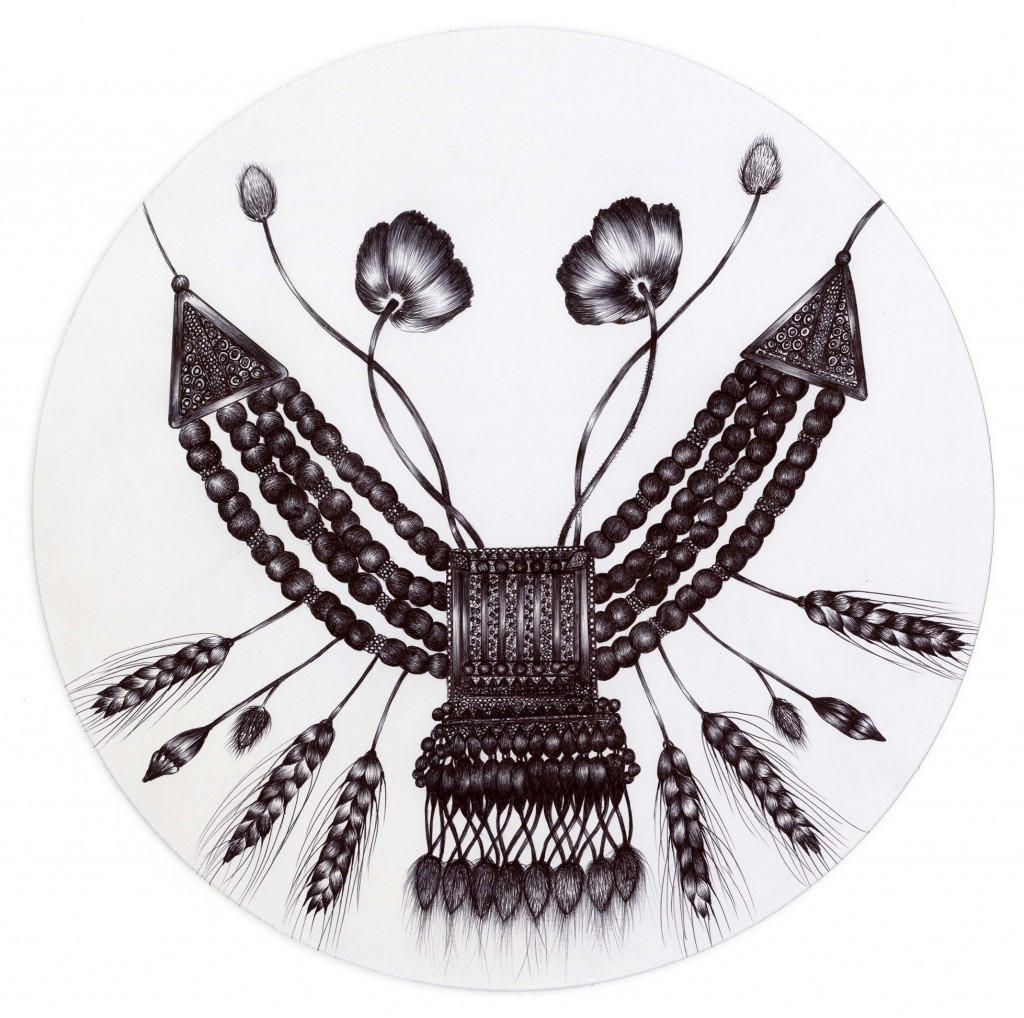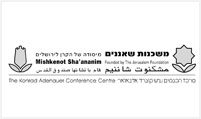Filigree and Various Spices
Artist:
Esther Cohen
Curator:
Gallery talk and artist book -launch with the artist and curator
Friday, 11.3.16 at 11:30 am
“… to devise skillful works, to work in gold, and in silver, and in brass,”
(Exodus: Chapter 31, Verse four)
Esther Cohen is presenting a new and unique collection of works in a solo exhibition at the Dwek Gallery, in Mishkenot Sha’ananim, Jerusalem. The works were all created using a ballpoint pen, drawing on unusual surfaces such as geographical and geological maps of Israel from different time periods or drawing on assorted round paper. In these works Cohen focuses on drawing and sketching fragrant flowers such as Frankincense, Cassia, and Lavender as well as local wildflowers. She integrates into these works detailed drawings of traditional filigree jewelry, an ancient gold and silversmith craft dating back to 3000 years BCE in the regions of Turkey and Mesopotamia. The name of the technique is composed of the Latin words Filum (wire) and Granum (grain of wheat) and is based on the use of filaments of various thicknesses and balls made of precious metals such as gold or silver connected in an intricate and dense mesh of winding tapestry. Cohen’s drawing technique, fine lines drawn with a simple pen, parallels the process of creating filigree jewelry, from a line or a wire, and a lot of effort, a creation is formed. Jewelry served as ornamentation, as a status symbol and as a way to accumulate wealth. Some jewelry was used as amulets meant for protection, fertility and blessings. The design of the jewelry is based largely on floral motifs and has a direct connection to nature which serves as a source of inspiration and reflection and as a deep understanding of life cycles and the processes of blossoming and withering.
The motif of the earth as a life source yielding the wheat/barley and spices, the material and the spiritual, is accentuated in these works combining drawings on maps of the Land of Israel from different periods. Cohen draws fragrant flowers beside unbridled wildflowers and Biblical motifs on geographical maps, such that at times these motifs are incorporated into the lines of the map and at times belie them. The jewelry, various spices and wildflowers seemingly ‘float’ on the picture, defying the laws of gravity. This sense of floating creates a rhythmic dance-like movement within each image and between one image and another, forming a harmony of lines and color between the works.
In this exhibition Cohen continues to engage in and explore rituals, narratives and cultural aspects from the Israeli experience and examine the interaction between nature and the man-maid. Her work challenges an inner cultural debate between heritage from the past and traditions that carry on to this day.


